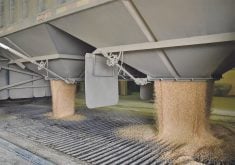Farm Credit Canada has come out with an interesting analysis of the rent-to-price ratio for farmland across the country.
Authored by Lyne Michaud, a senior analyst of valuation at FCC, the analysis uses cash rental rates in each province “for specific farmland benchmarks.”
When combined with its farmland values report, it provides useful cash rent benchmarks.
The rent-to-price ratio is the cash rental rate per acre divided by the value of farmland per acre.
Read Also

Kochia has become a significant problem for Prairie farmers
As you travel through southern Saskatchewan and Alberta, particularly in areas challenged by dry growing conditions, the magnitude of the kochia problem is easy to see.
It varies significantly from one province to the next. In Ontario, the cash rental rate per acre is only 1.45 percent of farmland value. The highest ratio is Saskatchewan at three percent with Alberta and Manitoba at 2.2 and 2.5 percent respectively.
Landlords one or two generations removed from the farm often wonder about the cash rent at a particular location.
“My sister and I own three quarters of land near Community X and we’re wondering if we’re getting a reasonable cash rent from our cousin. What’s the rental rate in that area?”
Unlike the sale prices for land, cash rents are not public knowledge. In fact, it can be counterproductive for farmers to share this information. If you’re renting land, you may have an idea of the going rate in your area, but you may also be flying blind.
In a few cases in recent years, the cash rent of farmland parcels has been auctioned to the highest bidder and that’s certainly public knowledge. Otherwise, coffee shop banter tends to focus on the highest cash rents anyone has heard.
It’s important to note that the price of land varies widely even within a particular region. As well, the FCC analysis shows the rent-to-price ratio has a wide range.
Saskatchewan has the narrowest range in farmland prices. For 2021, FCC reports the lowest average price of $1,900 an acre in east-central Saskatchewan and the highest average of $2,400 an acre in both northeastern and west-central Saskatchewan. However, within west-central Saskatchewan, prices ranged from a low of $1,300 to a high of $4,700.
Meanwhile, the rent-to-price ratio for Saskatchewan while averaging the aforementioned three percent ranged from a minimum of 1.5 to a high of five percent. The FCC analysis noted the highest rent-to-price ratios are usually for land that is the lowest value in a province.
Using the three percent average for Saskatchewan farmland valued at $2,300 an acre, the cash rent calculates to $69 an acre.
On an Alberta farmland price of $4,300 an acre, that province’s 2.2 percent rent-to-price ratio generates a cash rental rate of $95 an acre. On Manitoba farmland worth $3,700 an acre, a 2.5 percent ratio means a cash rent of $92 an acre.
Ontario is a different world. In 2021, Ontario farmland prices increased 22.2 percent, according to FCC analysis. That compares to increases of 3.6 percent in Alberta, 7.4 percent in Saskatchewan and 9.9 percent in Manitoba. Since cash rents are often for multiple years, the rent-to-price ratio has a lag time.
On Ontario farmland worth $15,000 an acre, the 1.45 percent rent-to-price ratio suggests a cash rent of $217 an acre.
While it isn’t a precise tool, having a rent-to-price ratio for each province provides a general guideline to the cash rental rates being paid.


















